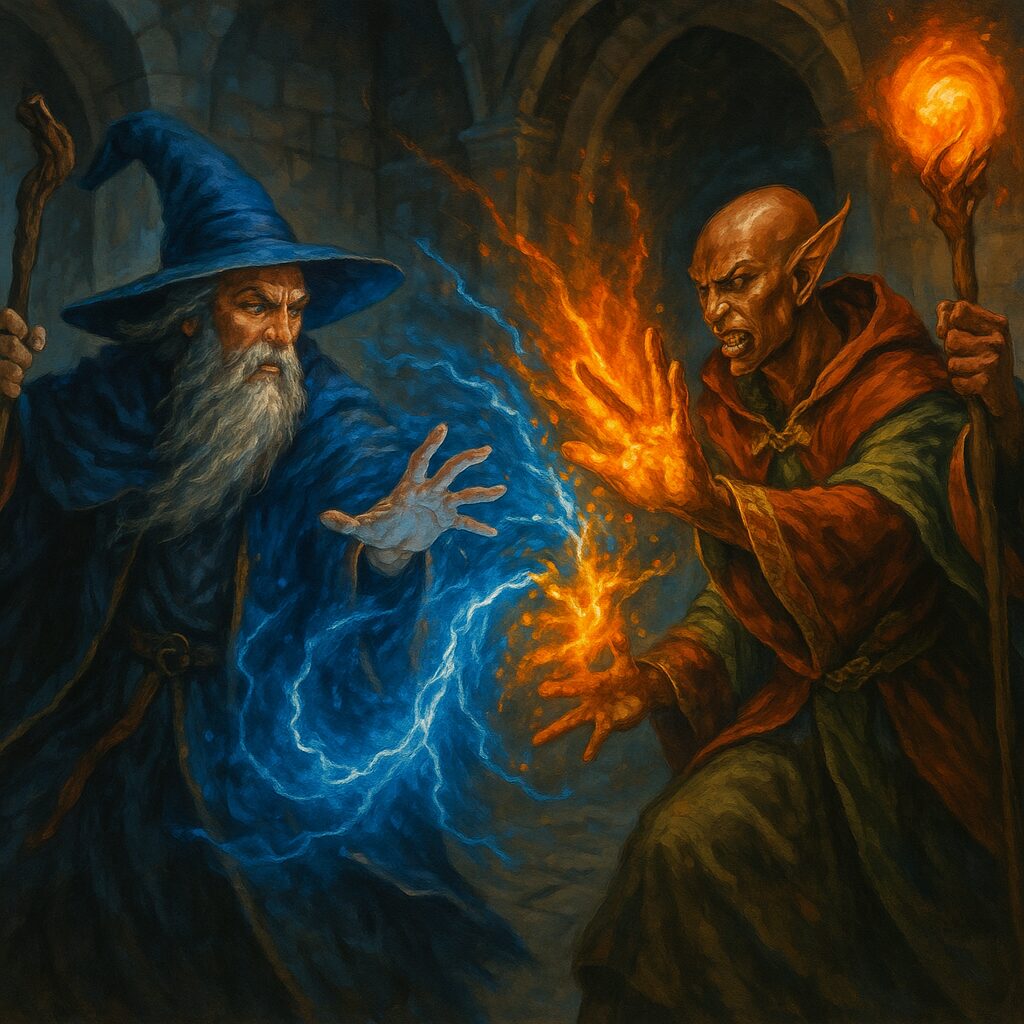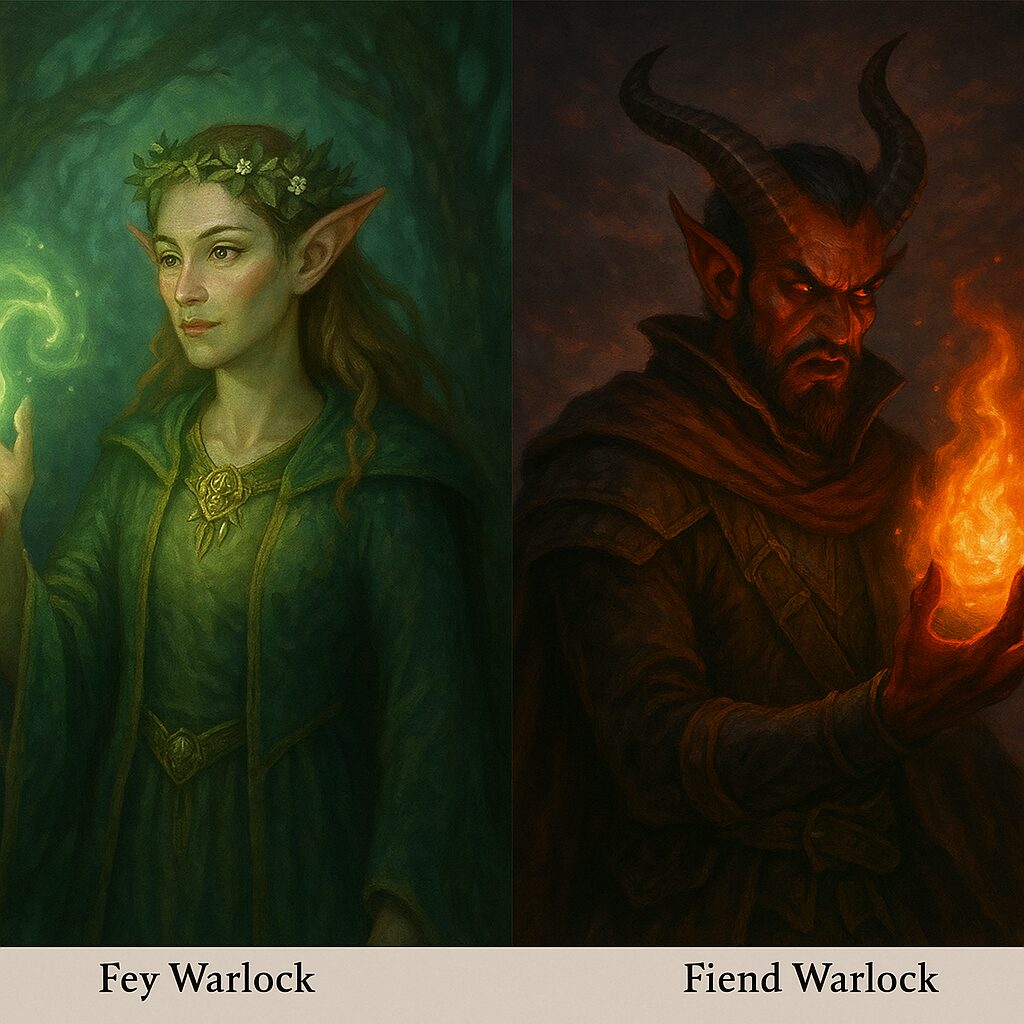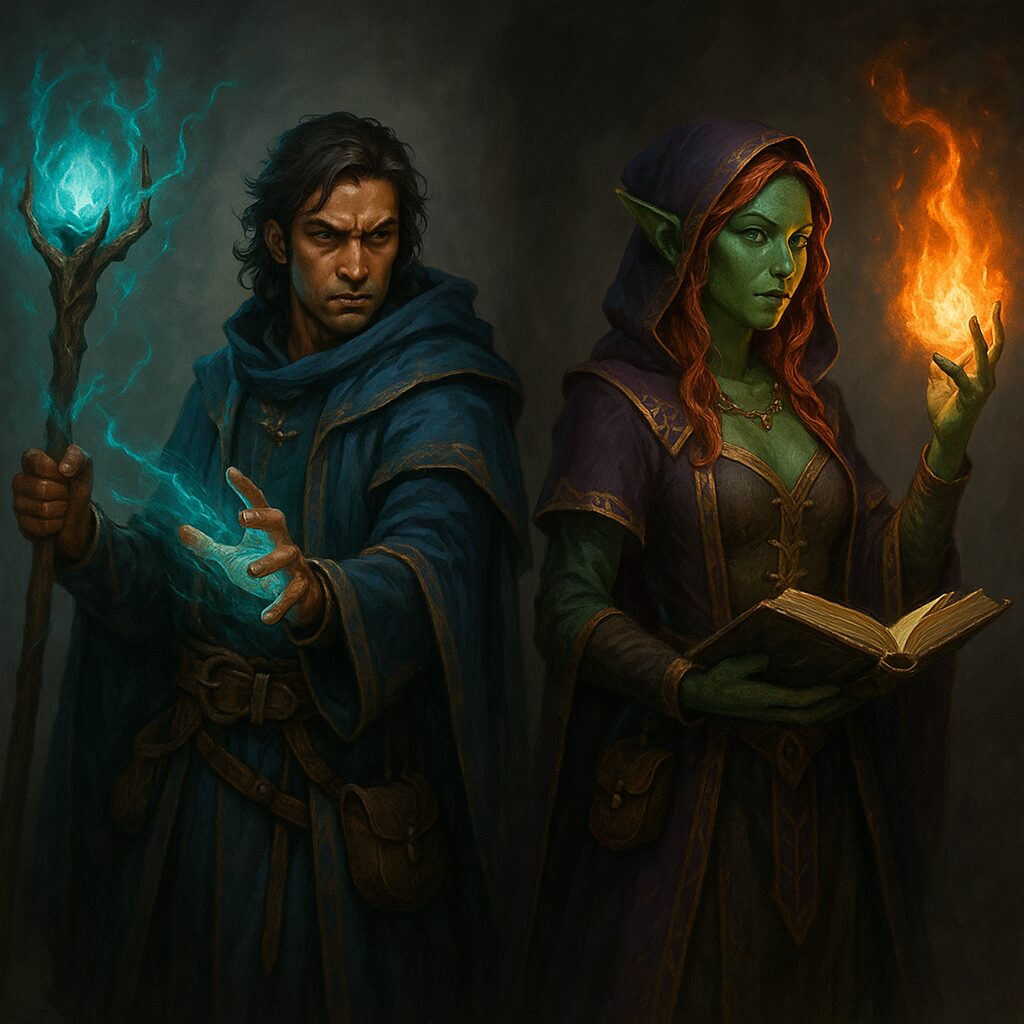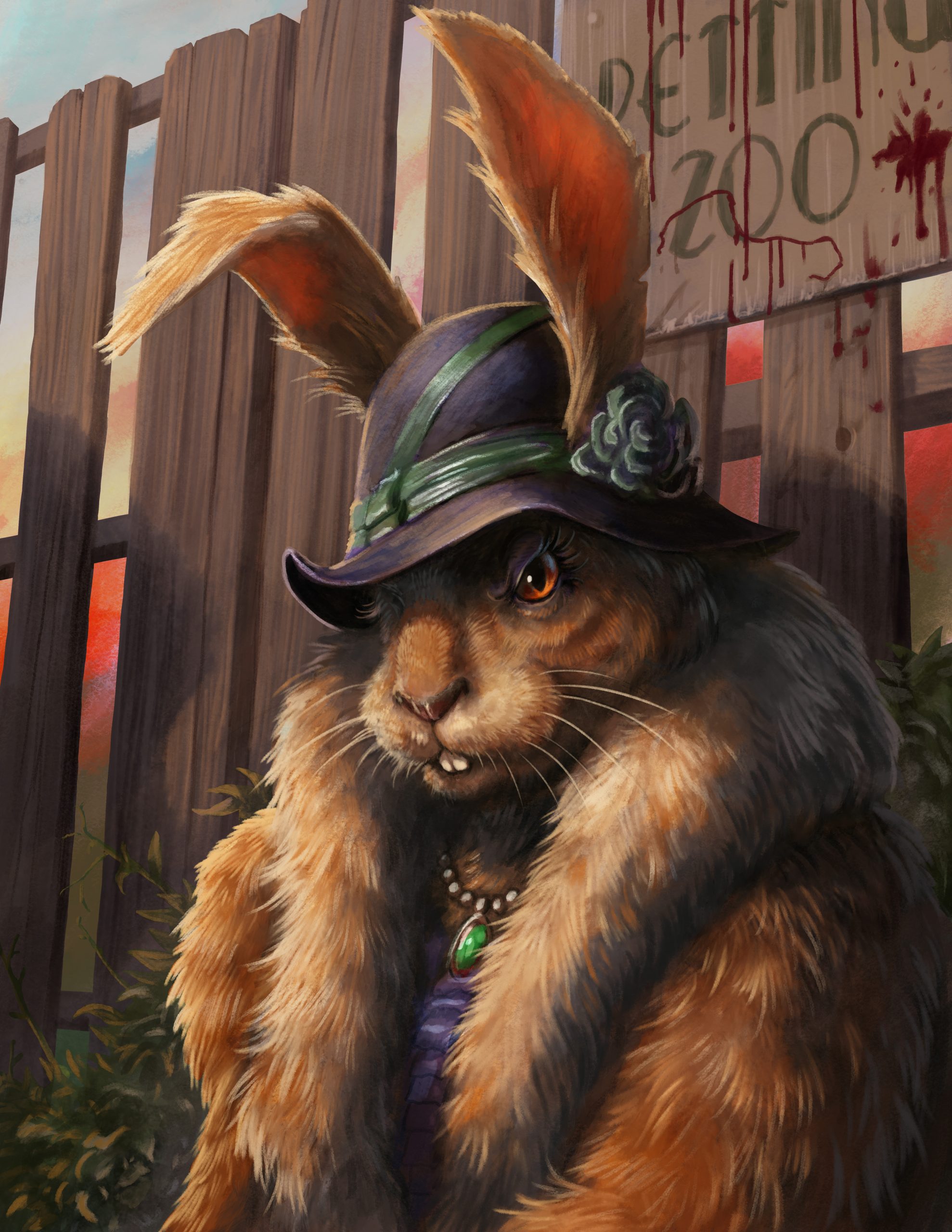
Into the Wilds: Comparing the 2014 and 2024 Ranger Core Class
The Ranger has long been a subject of intense debate within the D&D community. Often seen as a class with incredible fantasy appeal but inconsistent mechanics, the 2014 Ranger was  lauded for flavor but critiqued for being underpowered, especially at low levels. With the 2024 update, Wizards of the Coast has reshaped the Ranger into a sleek, skillful, and spell-savvy hunter of the wilds. Check out an in-depth discussion on YouTube here. Or you can get more Ranger with some wild content here.
lauded for flavor but critiqued for being underpowered, especially at low levels. With the 2024 update, Wizards of the Coast has reshaped the Ranger into a sleek, skillful, and spell-savvy hunter of the wilds. Check out an in-depth discussion on YouTube here. Or you can get more Ranger with some wild content here.
Let’s break down the mechanical differences and explore how the class has evolved for a more satisfying experience at the table.
1. Favored Enemy and Natural Explorer: Retired and Rebuilt
2014:
-
Favored Enemy granted bonuses against a specific creature type (advantage on tracking, bonus to damage, language knowledge).
-
Natural Explorer granted buffs while in specific terrain types.
-
Both were extremely situational, often useless outside specific encounters or regions.
2024:
-
Replaced by Expertise at level 1 (double proficiency in two skills), and a flexible Tracking feature that works regardless of terrain.
-
Favored Enemy is gone—replaced with Slayer’s Prey and Nature’s Veil (more on those later).
🧠 Takeaway: Rangers are no longer tethered to niche environments or enemies—their power is always relevant.
2. Spellcasting: Streamlined and Strengthened
2014:
-
Rangers were half-casters with a prepared spell list.
-
Limited spell options and often forgettable utility.
2024:
-
Rangers now know a fixed list of spells rather than preparing them.
-
They get spellcasting at level 1 (instead of 2), with a broader, more impactful spell list.
-
Added utility with Cantrip access, including powerful choices like Hunter’s Mark (now a cantrip for them).
🧠 Takeaway: Spellcasting is now more integral and powerful, helping Rangers feel magical from the start.
3. Fighting Style: Consistent and Customizable
2014:
-
Received a fighting style at level 2 from a limited list (Archery, Two-Weapon Fighting, etc.).
-
No official way to swap styles later.
2024:
-
Rangers still choose a style at level 2, but can swap it when they level up.
-
Plus: Fighting Style choices are slightly rebalanced to better serve both martial and hybrid builds.
🧠 Takeaway: Rangers now grow with their build rather than being locked in.
4. Primeval Awareness → Expertise + Tracking Upgrades
2014:
-
Primeval Awareness allowed sensing certain creature types at the cost of spell slots. Flavorful, but vague and inefficient.
2024:
-
Replaced by Expertise, which buffs skills like Survival and Nature.
-
Plus: A new Tracking ability lets Rangers mark and follow creatures without reliance on spell slots.
-
Clear mechanics, no spell slot cost, and always-on effectiveness.
🧠 Takeaway: Tracking enemies now actually works at the table.
5. Hunter’s Mark Rework
2014:
-
Hunter’s Mark was a 1st-level spell, requiring concentration.
-
Boosted weapon attacks, but competed with other concentration spells.
-
Costs a bonus action to cast and to move to a new target.
2024:
-
Now a cantrip: cast as a bonus action, no spell slot.
-
Does not require concentration and can be moved freely after a kill.
-
Its damage scales as you level up (like other cantrips).
🧠 Takeaway: Hunter’s Mark now feels like a true signature feature, not a spell tax.
6. Nature’s Veil vs. Hide in Plain Sight
2014:
-
Hide in Plain Sight required 1 minute of prep and gave a +10 bonus to Stealth, but was easy to break and rarely useful in dynamic combat.
2024:
-
Replaced with Nature’s Veil, which lets you turn invisible until the start of your next turn as a bonus action.
-
Uses a limited number of charges per day (based on proficiency bonus).
🧠 Takeaway: Finally, a stealth tool that works in combat.
7. Ranger’s Companion: Replaced with Beast Subclass
2014:
-
The base class had a beast companion option (in the PHB), but it was underpowered and unwieldy.
2024:
-
Animal companions are now exclusive to Beastmaster or other subclasses, not part of the base class.
🧠 Takeaway: The core class is cleaner and more universal, while subclasses handle niche fantasy builds.
8. Feral Senses and Capstone: Smoothed Out
2014:
-
Capstone (Foe Slayer) added Wisdom to attacks/damage—useful, but underwhelming at level 20.
-
Feral Senses let you detect invisible creatures but was vague in application.
2024:
-
Level 18 grants an Epic Boon, chosen by the player—more powerful and customizable.
-
Feral Senses clarified to act more like true blindsight, making stealth enemies less frustrating.
🧠 Takeaway: Late-game power now scales appropriately and gives choices.
🧭 Side-by-Side Summary Table
| Feature | 2014 Ranger | 2024 Ranger |
|---|---|---|
| Favored Enemy | Situational damage & tracking | Replaced by Slayer’s Prey / Tracking |
| Natural Explorer | Terrain-specific bonuses | Replaced by Expertise & core features |
| Spellcasting | Prepared spells | Known spells + cantrips at level 1 |
| Primeval Awareness | Spell slot-based sensing | Passive, mechanical tracking system |
| Hunter’s Mark | 1st-level spell, costs slot & concentration | Cantrip, bonus action, no concentration |
| Fighting Style | Locked-in | Swappable during level-ups |
| Stealth Features | Hide in Plain Sight | Nature’s Veil (invisibility) |
| Animal Companion | Optional, weak | Subclass-specific only |
| Capstone / L20 | Static bonus | Choose an Epic Boon |
🌲 Final Thoughts: A Wilderness Warrior Reimagined
The 2024 Ranger doesn’t reinvent the class from scratch—it refines and empowers it. By shifting from narrow, situational mechanics to broadly useful core features, the Ranger now feels agile, mystical, and always relevant, whether in forests, dungeons, or the Astral Sea.
If the 2014 Ranger was a specialist struggling to keep up, the 2024 Ranger is a versatile hunter, equally at home sniping from the shadows, scouting ahead, or weaving magic into every strike.
Thanks for reading. Until Next Time, Stay Nerdy!!












Anna G
August 19, 2025 at 11:54 pmThe 2024 Hunter’s Mark is not a cantrip and it’s still a concentration spell, and does not scale damage (just length of time) with levels. It also still requires a bonus action to move from one target to another.